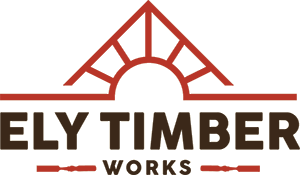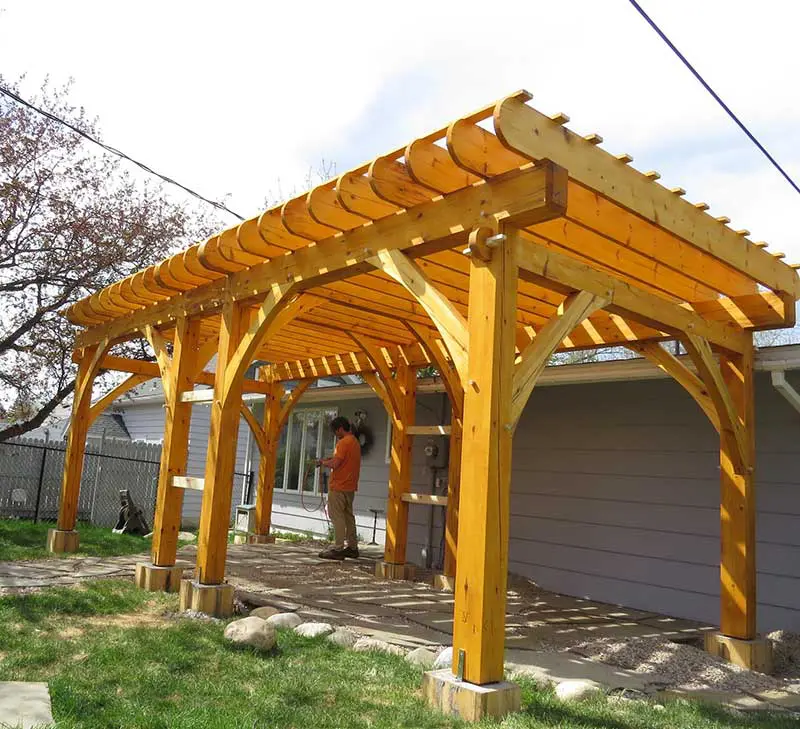FAQs
You have questions? We have answers!
What Can Be Built with a Timber Frame?
Timber framing can be used for almost any type of building: new homes, additions, outbuildings, porches, gazebos, saunas, pergolas, pavilions, barns, boat houses, studios, stairs, boat houses, and commercial structures.
What Are SIPs?
Structural insulated panels (SIPs), commonly utilized in timber frame construction, are panels consisting of a rigid insulated foam core enclosed by two structural boards. SIPs offer durability, cost efficiency, and energy conservation. Although the initial cost of SIPs may exceed that of conventional framing materials, the substantial labor savings during installation along with the energy savings, which typically yield a return on investment within three to five years, ultimately reduce long-term house expenses.
Can you design my timber frame?
Yes, we can design your timber frame structure or recommend a designer we work closely with.
I already have a design; can you use it?
At Ely Timber Works, we value your unique design ideas and are more than capable of incorporating them into our timber frame projects. While we may need to make adjustments or enhancements to ensure compatibility, we are committed to collaborating with you throughout the process. Your input matters greatly to us as we strive to transform your vision into a reality, surpassing your expectations in the end.
Can I add a timber frame element to my existing home?
Absolutely! Adding a timber frame touch is an excellent way to give your house a revitalized appearance. Whether it’s embellishing your exterior or an interior room with decorative timber trusses, or even considering a timber frame addition or porch, there are numerous options and price ranges available for timber frame elements. At Ely Timber Works, we specialize in bringing these transformative ideas to life.
Will there be cracks and twists in my timber after it is in place for a while?
At Ely Timber Works, we take pride in our high-quality timber, which goes through a meticulous air drying process for at least three years. During this time, the wood naturally shrinks, develops cracks (known as checking), twists, and bows. However, before constructing with the air-dried wood, our skilled team brings the timbers back to the sawmill and removes any twists and bows, resulting in stable, straight, and square timbers that are resistant to movement. When we build timber frames, you can rest assured that there will be minimal timber movement over time, and our joints will maintain their integrity even after five years of use. Trust Ely Timber Works for durable and long-lasting timber structures.
What is the difference between Timber frame and Post & beam?
The difference between timber frames and post and beam construction lies in the method used to connect the frame members. Timber frames are built using mortise and tenon pegged joinery, occasionally with the addition of steel connectors. On the other hand, post and beam construction relies on horizontal beams supported by upright posts, typically connected using metal brackets or lag bolts. Although the joints in post and beam structures may resemble timber frames, they do not involve cutting mortise and tenon joints into the timbers. At Ely Timber Works, we specialize in both timber frames and post and beam construction methods.
What Is the Best Type of Wood to Use?
We at Ely Timber Works understand the importance of choosing the right wood for your timber frame. With considerations such as availability, cost, suitability, and aesthetics in mind, we primarily utilize Douglas Fir, Western Red Cedar, and our locally sourced Minnesota native White Pine. However, we also accommodate special requests for other wood species. Each type of wood possesses unique characteristics that should be taken into account when making your decision. Additionally, we can explore the possibility of harvesting timber from your property. Our team will provide you with expert guidance to help you make the optimal choice for your project.
Can my timber frame have curved pieces or natural looking timbers?
Yes! Curved timbers can add interest to your timber frame and be incorporated in various areas. They can serve as eye-catching focal points or be used to soften the straight lines of your timber frame. Additionally, the use of natural timbers not only adds personality but also creates a dramatic statement, serving as a visual reminder that your materials come from trees. At Ely Timber Works, we offer the option to include curved pieces and natural-looking timbers in your timber frame, allowing you to customize it according to your preferences.
How is the wood in my timber frame finished?
There are many options for finishing your frame. Do you like the look of rough timbers or do you want them sanded smooth? Do you want the frame to age and change color naturally or do you want to stain or seal it? We can discuss all the options with you.
How much will it cost?
At Ely Timber Works, the cost of your timber frame is determined by factors such as size, wood type, building site conditions, and finishing options. Once you have a design, we will provide an estimate and discuss it with you. We can also offer advice on budget-friendly structuring options. Collaborating with us is even more beneficial as we design and plan your building with your budget in mind.


